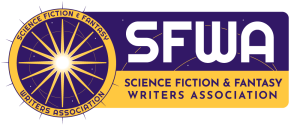Written by Chuck Rothman
Over the years, publishers have developed certain standards to make their jobs easier. Manuscript format is one of them, and something that often creates some heated discussion in various newsgroups. There are several points that you need to remember:
- The standards are there for a reason. They are not arbitrary and are generally set up to make certain jobs easier.
- It’s not your job to design the manuscript. You supply the words; the publisher supplies the format.
- You don’t have to stick to the format except in the final version. If you prefer something else in your drafts, fine. It’s simple to change the font once you’re printing out the final version.
- The wrong format or font won’t destroy your chances; it may not even hurt. It a question of whether you’re willing to take the chance that you’re writing is good enough to overcome the difficulties you’ll cause by not doing things properly.
- As a personal aside, I’ve noticed the people who fight hardest against the standard format usually end up using Times Roman instead — which, on most computers, is the default font that comes up automatically. Hard to believe they’ve put much thought into their choice.
That stated, here are the rules for standard format:
- Manuscripts must be typed, double-spaced, on one side of the paper, with wide enough margins (min. 1-in.) for the editor to make notations.
- Fonts (and here’s where the fights occur): The preference is for monospaced fonts — fonts where all letters are the same width. The most commonly used monospaced font is Courier; the most commonly preferred size is 12 points (also called 10 pitch — 10 characters to the inch). This is a hangover from the days before computers, when most typewriters used what was known as “Pica” type — essentially 12 point Courier. It is also acceptable to use a 10-point monospaced font like Prestige Elite — again, a hangover from typewriter days, when you could buy “Elite” typewriters that used 10-point (12 pitch– I know, it’s confusing) Prestige. The actual font is less important (as long as it’s large and dark enough) as the fact that it must be monospaced; proportional fonts screw up word counts.
- No fancy formatting within the manuscript. Indent each paragraph five spaces (1/2 in.). Indicate italics by underlining (do not use italics; they are easily missed). Indicate boldface by drawing a wavy line beneath the text and writing “bf” in a circle in the margin. Do not hyphenate words (the typesetter will include the hyphen so the word might read “Schenec-tady”). Do not right justify the text (you may like it, but it’s harder to read — especially on long paragraphs — and it messes up word counts).
- Indicate a blank line by placing a # in the center of the line. The # indicates space to a typesetter.
- At the top of the first page, type your name (the one you want them to write the checks out to) and address at the upper left corner. Type the word count at the upper right corner Skip down to the middle of the page. Type the title of the story, centered (optionally: ALL CAPS). Go down a line. Type “by Your Name” (if you want to use a pen name, type it here; the check will be sent to the name at the upper left). Go down another line and begin the story.
- Don’t put on a Copyright notice. It’s unnecessary. You also don’t have to indicate the rights offered. Most magazines tell you what they’re buying; if you don’t like it, don’t submit to them. Don’t write “Approximately” by the word count. Editors know the word count is approximate.
- On each additional page, put your last name and the page number in the upper right corner: Name/2
You can also include a keyword from the title of the story: Name/Keyword/2, but this is optional — it’s rare that you have two manuscripts in a position when they can be mixed up, and if at the last minute you decide to retitle your novel, you only have to change the title page instead of printing out the entire thing with the correct keyword. - At the end of the story, center the word “end”.
